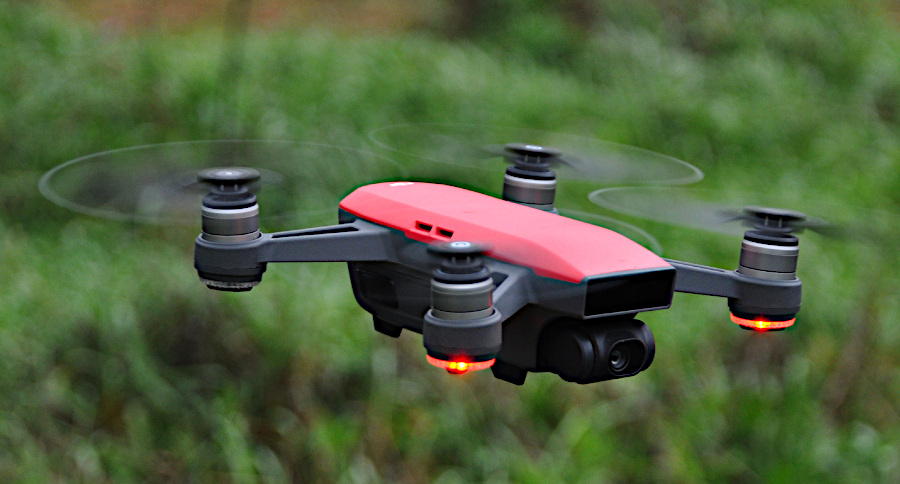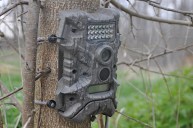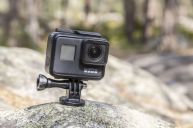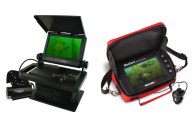The DJI Spark may just be your next useful hunting a fishing tool.
Love them or hate them, it seems drones are here to stay. The market is absolutely saturated with options right now and if you've had any interest in them, it can be difficult to wade through the options.
I know, because I did the exact same thing. But I also believe I found the perfect drone for a beginner like myself. One that I've already used extensively and will continue to do so in the future.
Here's why you might want to consider a DJI Spark as your next big technology purchase.
DJI Spark Specs and features
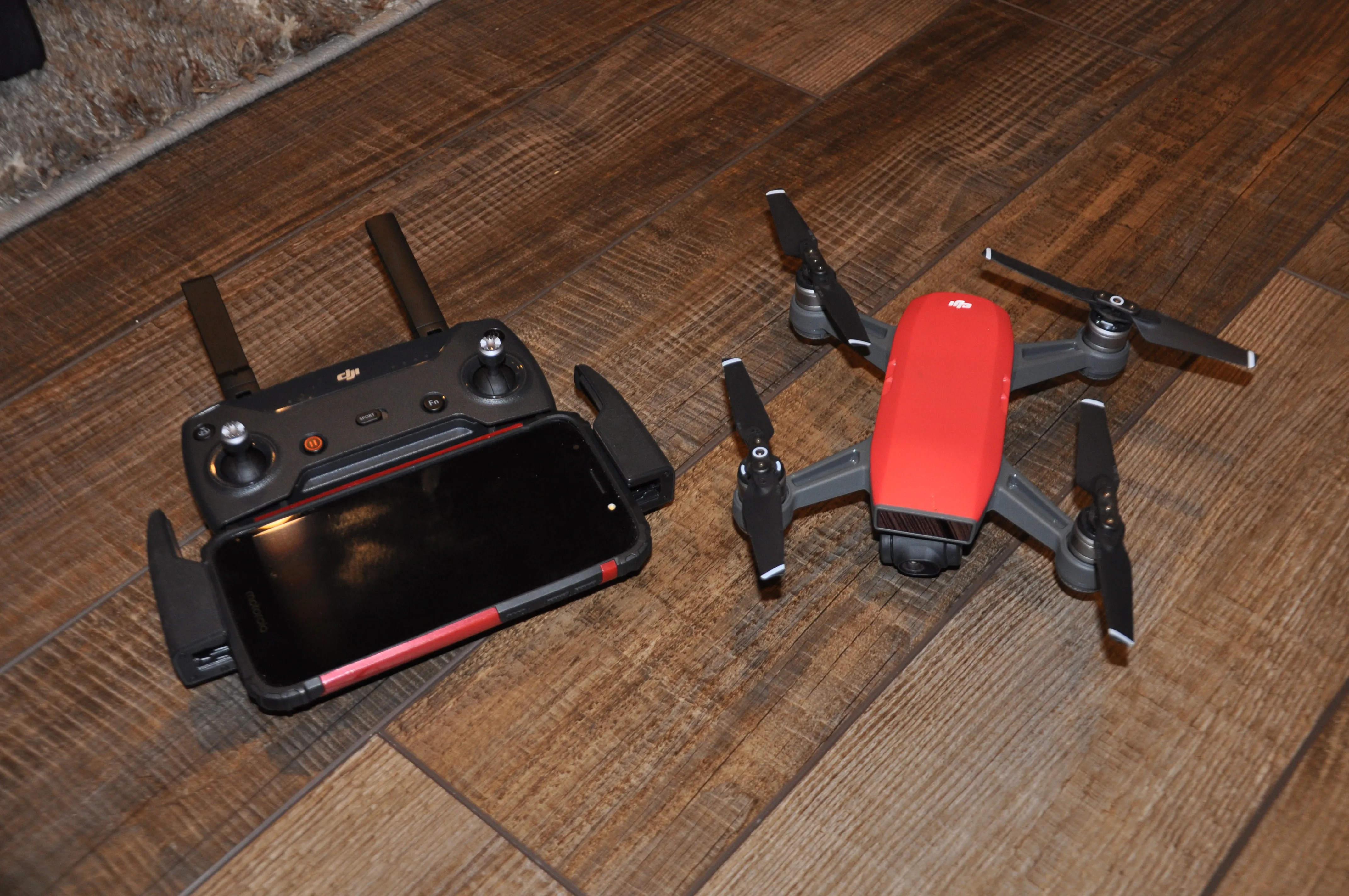
Travis Smola
I started shopping for my drone in advance of my vacation to Scotland this past summer. I run a small geocaching YouTube channel and I wanted something to capture the majesty of the Scottish countryside. I also wanted something I could use back here in the United States for capturing memories and scouting while hunting, fishing and camping.
Because my vacation was an international trip, I wanted something small and light. It didn't take me long to settle on the Spark.
This drone is just under seven inches long and weighs just over half a pound. When they say it fits in the palm of your hand, they aren't lying. As one woman on the Isle of Skye exclaimed to me with a thick Scottish accent upon seeing me holding it: "Is that all there is to it? It sounded so much larger in the air!" It was easy transporting my new drone overseas in my carry-on luggage through multiple flights on the trip.
But it wasn't just size I was looking for. It was functionality. The Spark's camera features a 25mm lens with a 1/2.3" CMOS sensor. The whole thing is stabilized by a two-axis mechanical gimbal that results in some buttery smooth footage no matter how much the drone is moving.
The final selling point for me was the fact the Spark shoots 1080p video. Whenever I show this drone to people, they're shocked such a small device has these kinds of camera features and video resolution. The Spark uses micro SD cards, so viewing the images and video is easy.
If you don't believe me on how great the footage looks, just watch the compilation I put together.
The image quality of the Spark speaks for itself. My friends on the trip to Scotland made fun of the drone quite a bit during our trip. But after I returned home and cut the footage together into a trailer, all I got was a ton of "The drone shots are so cool!" comments.
DJI advertises the Spark's battery life as having a 16-minute flight time in perfectly calm conditions. You likely won't encounter perfect conditions most of the time.
I tend to get about 10-12 minutes of flight time out of each battery, but I also like to land it at about 30% battery remaining, just to be on the safe side. So far, I've found the Spark's batteries to be perfectly adequate for what I need.
We should also talk about gesture control, one of the big selling points for the Spark. Activating this mode allows you to move the drone and take photos or video using simple hand gestures.
All it takes is a few simple hand movements to take your photo, effectively turning it into a selfie drone. When you're done, you can get it come to you and land in your hands using what DJI calls "PalmControl." It's definitely slick.
You can also set a "ActiveTrack" to get the Spark to follow you. This is useful if you're slowly cruising across the lake in your fishing boat and want it to capture the moment.
As if all that wasn't enough, the Spark also features a "QuickShot" mode which allows you to set the drone to get professional-looking shots without being an expert flyer. For example, just set the mode and you can get the Spark to circle you and your friends in an empty field while slowly ascending.
Another mode, TapFly, allows you to fly the drone by selecting a destination on the view screen and having it fly to it with perfect precision. The whole time, the Spark uses its built-in sensors to avoid obstacles. to You don't even have to be an expert pilot.
While all these modes work exactly as advertised, I also don't find myself using actively using them. It's not that I don't like them, I just find flight control easier with the remote controller. The Spark is perfectly capable of flying on its own thanks to its sensors, but not being in full control of the aircraft makes me nervous. To me, they're the type of gimmicks you show off to friends at a party rather than something you use all the time.
Flying the DJI Spark
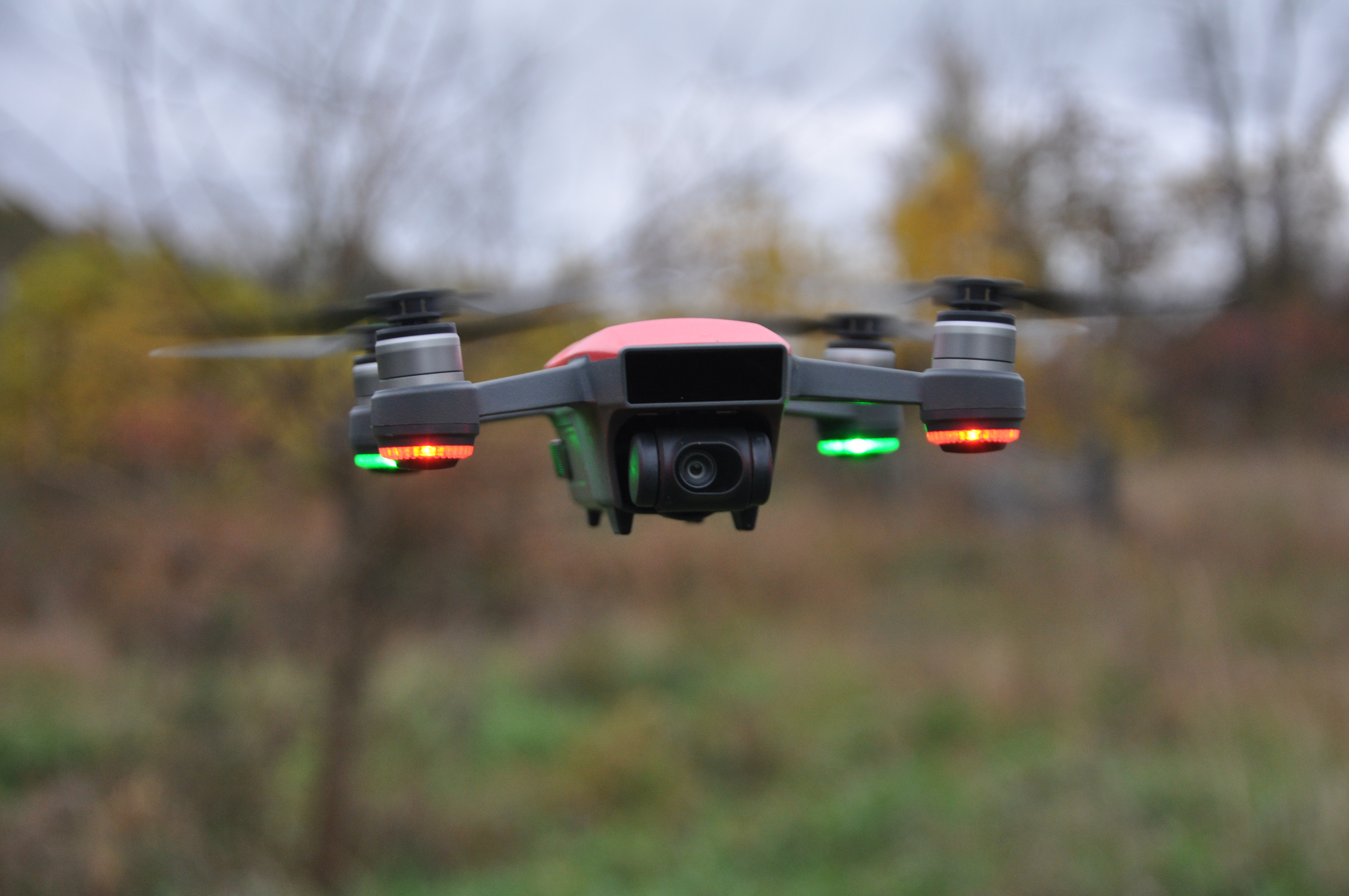
Travis Smola
Now let's talk controls. This DJI drone can be operated entirely through your smart phone or other mobile device via Wi-Fi connection. The Spark drone operates perfectly well through touchscreen control, but I recommend getting the remote controller. The controller synchs up with the phone and the quadcopter to operate all as one unit.
It works with both iPhone and Android devices. Arms on the controller hold your phone in place and give you a live, 720p view of what the drone is seeing.
I found that the controller's sticks offered more precise handling than a phone's touchscreen. This is more of a personal preference area than anything else. I enjoy the tactile feel of the sticks more. Plus, if the DJI app crashes on you, the spark can still be piloted by the remote controller.
In the past I owned a small, cheap remote-controlled helicopter. I could never fly that thing. I lost count of how many times I crashed it. It seemed like I could never keep it in the air more than a few seconds. I'll admit, I was worried it would be the same with a drone, but I was in for a pleasant surprise the first time I took off. It truly is a joy because this drone practically flies itself.
When your hands aren't on the sticks, the Spark hovers in midair and doesn't respond until you tell it to. DJI built in several "Intelligent flight modes" which are designed to make flying the Spark super easy. Beginner mode lets you fly to a maximum altitude of about 100 feet and distance of around 150-200 feet.
Taking it off beginner mode lets you fly to around 400 feet (the maximum allowable altitude according to the FAA). I tend not to fly more than 1,000 feet away from where I'm standing. That's mainly because this is a small drone and losing sight of it makes me nervous for an expensive piece of hardware.
I really appreciate the safety sensors in the Spark. They'll stop the drone immediately and hover if you get too close to a tree or building. DJI also has an internal database of no-fly zones built in that will warn you if you're too close to an airport or military installation. It's a nice feature, especially for a new drone owner.
For people looking for more speed with this mini drone, all it takes is a flip of a switch on the remote to put the aircraft in sport mode. This effectively disables all the sensors and crash avoidance features built into this drone. I've tried it a few times and the speed made me a little too nervous. The Spark can fly around 30 miles per hour if you gun the sticks.
Personally, I don't need that much speed, as my focus in using this drone is for capturing photos and video. But it is there if you're looking to do some fancy flying.
Uses in hunting or fishing
Now I know what some of you hunters and fishermen are thinking. What possible use can I have for a drone? Well, more than you think.
Today's modern anglers and hunters use satellite maps to locate funnels and potential bedding areas. Fishermen use them to find tucked-away lakes and remote backwaters where the biggest fish are potentially hiding.
The problem with these satellite images is that they don't produce enough fine details. You usually can't see the game trails or bedding areas with something taken from space. But with the Spark, it's a whole different ballgame. Not only can I see those things, but somethings I can spot animals themselves with the Spark.
The interesting thing is, many animals act indifferently to the Spark. It's unlike anything they've ever seen in nature and they don't associate it with humans or danger. This means you could fly one of these over a bedding area to get the lay of the land without fear of pushing out that big buck.
They also give you a better picture of hidden waters. Behind my house, back in the woods on private land is a small lake. I've known it's back there from conversations with neighbors, but I had no idea what it looked like until I took the Spark out over the trees to have a look at it. I now know there's at least one dock, but the rest of it is uninhabited. I can only image how good the fishing must be with such little pressure on it!
Simply put, I quickly realized this may be the most valuable scouting tool I've bought since my trail cameras. You do have to be careful of new regulations coming into effect all the time on the use of drones for fishing and hunting, but used from a safe altitude, I expect to gather all kinds of data using the Spark.
Plus, as I found in Scotland, a drone captures the landscape and the memories of a location in a way your handheld cameras or phone cannot.
The Fly More Combo
If you buy a Spark, I seriously recommend buying the Fly More Combo. It just makes the most sense financially. You can get a Spark on Amazon for $400 without a remote control or other accessories, but you'll save more money by getting the combo.
The Fly More Combo I bought came with an extra set of propellers, propeller guards, a charger with spots for three batteries, an extra battery, the remote controller, a micro USB cable and a soft case to hold it all. I got all this on sale direct from DJI through Amazon for $550, and you can find it for about $680 regularly priced.
If you start adding up the costs of everything separate, you're going to be spending a fortune. Even if you decide drones aren't for you after a while, you'll likely get more resale value out of the device with this combo than you would without it.
The few cons
https://www.youtube.com/watch?v=PNNB8YO—y0
There are a few things about the Spark I haven't been thrilled with. First off, setup is a total headache. That's why I'm embedding one of the YouTube videos I watched to finally get mine off the ground. It's just easier to have someone walk you through it step by step than it is to read through DJI's countless instruction manuals.
The other problem I had is in the calibration process. When I got to Scotland, I had to re-calibrate the compass and IMU (inertial measurement device). I must have done something wrong when I did this because my first flight nearly resulted in my drone taking a permanent dip into the river near Doune Castle.
If you don't calibrate this right, it can cause the Spark to fly erratically. But sometimes it isn't obvious the IMU isn't calibrated properly until you get it off the ground, making for some tense moments with a $500 device.
Calibrating the compass and IMU is easy enough, but it is a hassle when all you want to do is fly and get your shot. I've seen recommendations from DJI saying you should do this every time you power up the Spark in a new place.
Whatever you do, I don't recommend rushing your first flight with this thing. It's a complicated device with a plethora of settings and menus and adjusting to them and learning to use them all can take some time. It's a huge learning curve.
The bottom line
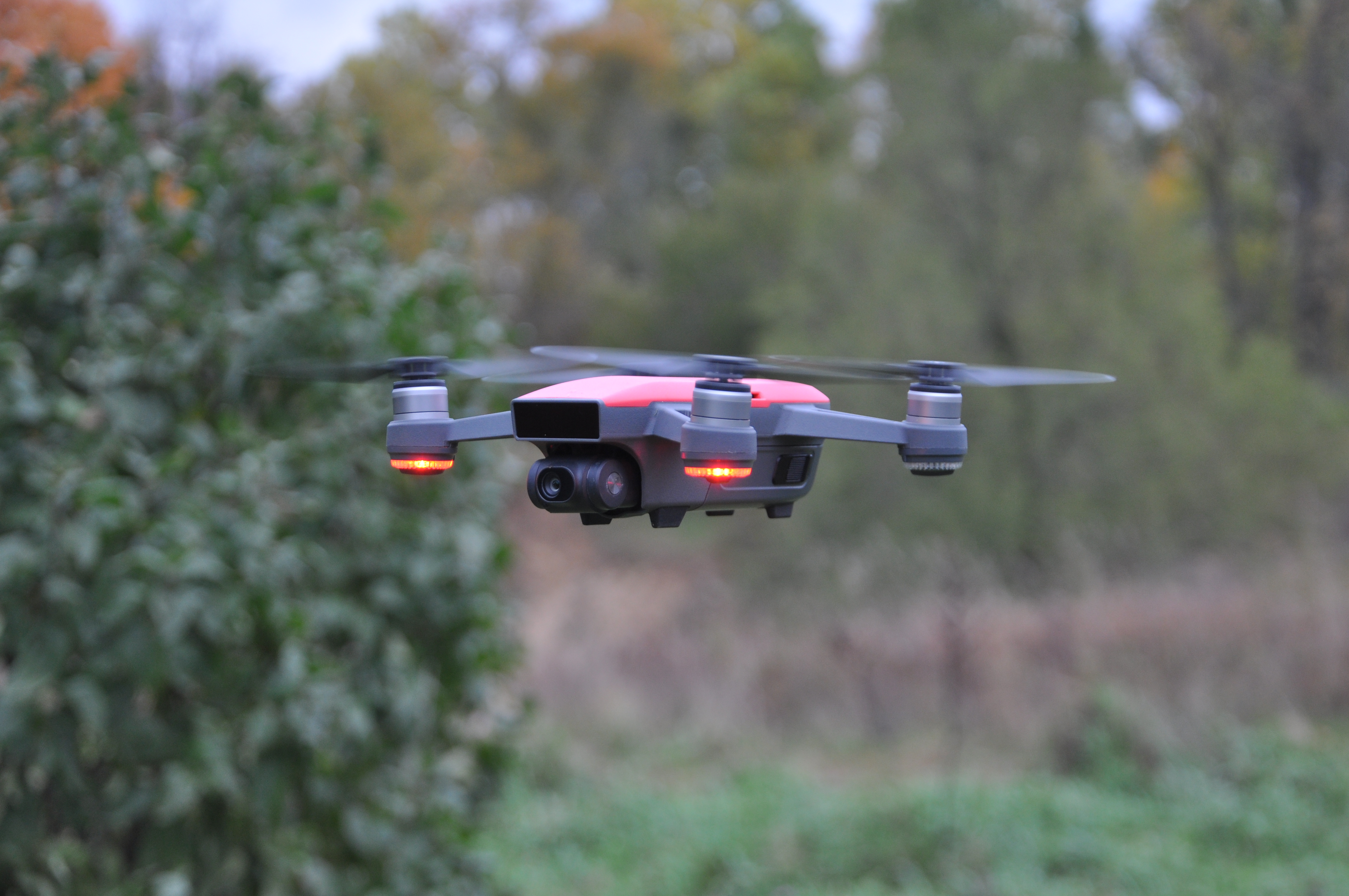
Travis Smola
If you're a hunter, fisherman or camper who loves capturing unique views of the outdoor spaces we all know and love, this camera drone is a great way to do it. It's also an excellent new scouting tool for both hunting and fishing potential.
If you've been considering getting a drone for a long time but have been intimidated by the price and complexity of other models, the Spark is a great option. It's easy to fly and insanely more affordable than DJI's other drones like the Mavic or the Phantom, while packing in many of the same features.
Bottom line, the Spark is a winner and something I plan to use extensively in my outdoor adventures in the future.
For more outdoor content from Travis Smola, be sure to follow him on Twitter and check out his Geocaching and Outdoors with Travis Youtube channels.
NEXT: BELIEVE IT OR NOT, FISHING WITH DRONES ACTUALLY WORKS
WATCH
